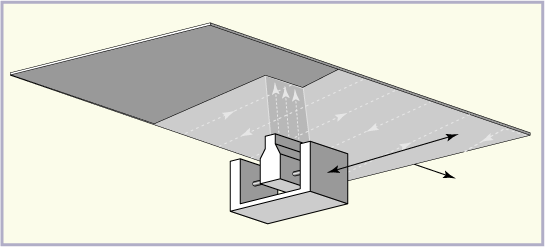Spray Fluxing is the most common way to flux a printed circuit board today. When spray fluxers were first developed they were clumsy, inefficient machines. They were messy and required a lot of maintenance. In addition, spray fluxers require separate venting from the main portion of the wave solder machine and a “total loss” system is used, especially when using no-clean flux. Ralph Woodgate's book The Handbook of Machine Soldering SMT and TH mentions that, "the main systems fall into the following categories:
- The compressed air spray total loss system.
- The ultrasonic spray total loss system.
- The airless spray total loss system.
- The drum and air knife spray recirculating system."
Some of the advantages of using a spray fluxer are:
- The spray fluxer may be programmed to cover specific areas of the PCB. This is helpful if selective soldering is to be achieved.
- The quantity of flux can be changed based on specific process characterizations.
Spray fluxers move perpendicular to the conveyor movement. This, combined with the desire to apply the effective minimum amount of flux, ensures even and proper wetting. This is beneficial for many reasons, including:
- It conserves operational costs.
- Better wetting is achieved when there is less flux residue.
- Longer component leads are fluxed easily.
Next week I will be talking about The Total Loss System and Spray Fluxing.
*This is the third of six sections of Fluxers, a mini series part of the larger series entitled Wave Soldering (A Segmented Synopsis).


